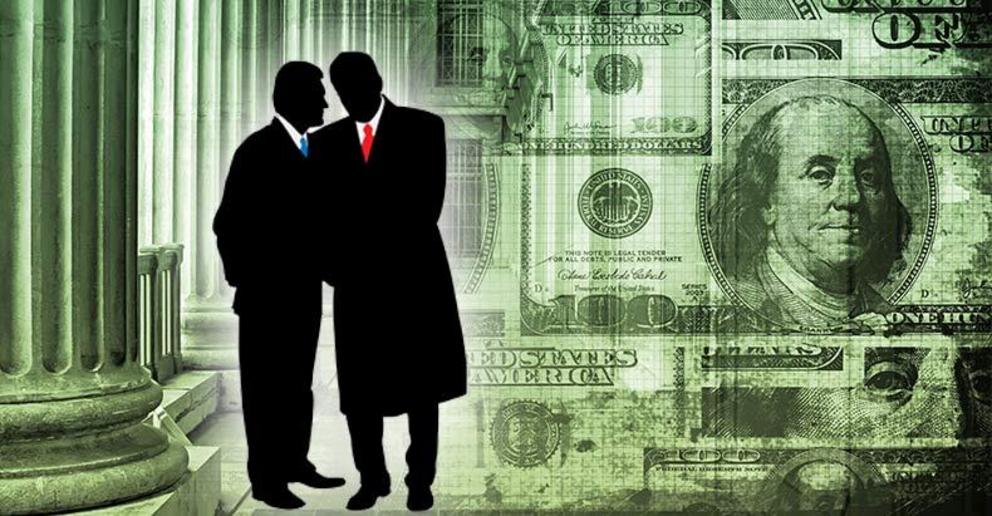Money talks in politics
Recently, I came across some rather interesting information most citizens, and voters in particular, probably don’t know about, i.e., how political-party-affiliated causes and organizations are funded. The organization OpenSecrets.org has been keeping track of such demographics since its founding, and is a treasure trove of how political party bell curves operate in retrospect.
Currently, we are riding a new curve!
Below is a chart indicating what was going on in the 2010 election cycle. It shows what I would call a “cooperative” political attitude and demographics, not the huge divides and differences we are experiencing since the 2010 election. Congress can’t seem to work together anymore!
Democrats and Republicans Sharing Big-Dollar Donors, DCCC’s Million-Dollar Pay-Off and More in Capital Eye Opener: November 10, 2010
CORPORATIONS GIVE BIG TO BOTH SIDES
The Democratic Governors Association and Republican Governors Association


Below are charts showing “demographics” for how organizations either follow, or precipitate, political change. Note when the “swing years” occur, especially how contributions are allocated between differing political philosophies.
The current 2018 election cycle contributions by Top Organization Contributors per OpenSecrets.org can be found in a chart listed here.
The 2008 election cycle contributors are found here.
The 2010 election cycle contributors are found here.
The 2012 election cycle contributors are found here.
The 2016 election cycle contributors are found here.
This OpenSecrets website talks about “Dark Money” with charts indicating what’s going on in another obviously ‘important’ money arena.
Source: opensecrets.org
The Center for Responsive Politics is a non-profit, nonpartisan research group based in Washington, D.C., that tracks the effects of money and lobbying on elections and public policy. It maintains a public online database of its information. Wikipedia
Founders: Former U.S. Sens. Frank Church & Hugh Scott (1983)
Money talks!
But there’s one segment of business, industry and commerce where money not only talks, but uses megaphones; it’s the pharmaceutical—healthcare industries!
OpenSecrets lists the 2018 Pharmaceutical and Health Products industries contributions to the U.S. Congress here.
You will note that Democrats and Republicans are almost “even-steven” — $9,316,412 [D] to $10,449,501 [R].
The top 20 Members of Congress who received the largest donations are listed here with donations ranging from a high end of $411,700 to the low end of $165,420! Does that kind of money buy vested interest legislation and congressional votes?
Here are the names of all Senators and their gifts, while this site lists all members of the House of Representatives contributions.
In the very first chart at the beginning of this article, six out of 10 are Big Pharma and healthcare related. Is that why prescription drugs and pharmaceuticals cost so much, to pay for congressional favors?
Lobbying should be banned by law because it is discriminates against the average American citizen, who cannot put up that kind of money to impress members of Congress to vote in a constituent’s interests, as taxpayers supposedly are the ones who pay their salaries, but most often get the short end of the stick because Congress introduces, and votes favorably for, vested interests’ agendas, as Congress did with the National Childhood Vaccine Injury Act (NCVIA) of1986 (42 U.S.C. §§ 300aa-1 to 300aa-34).
As the maxim goes, “Follow the money,” to which I say, “and you will find a pot of gold for generous vested interests.”

